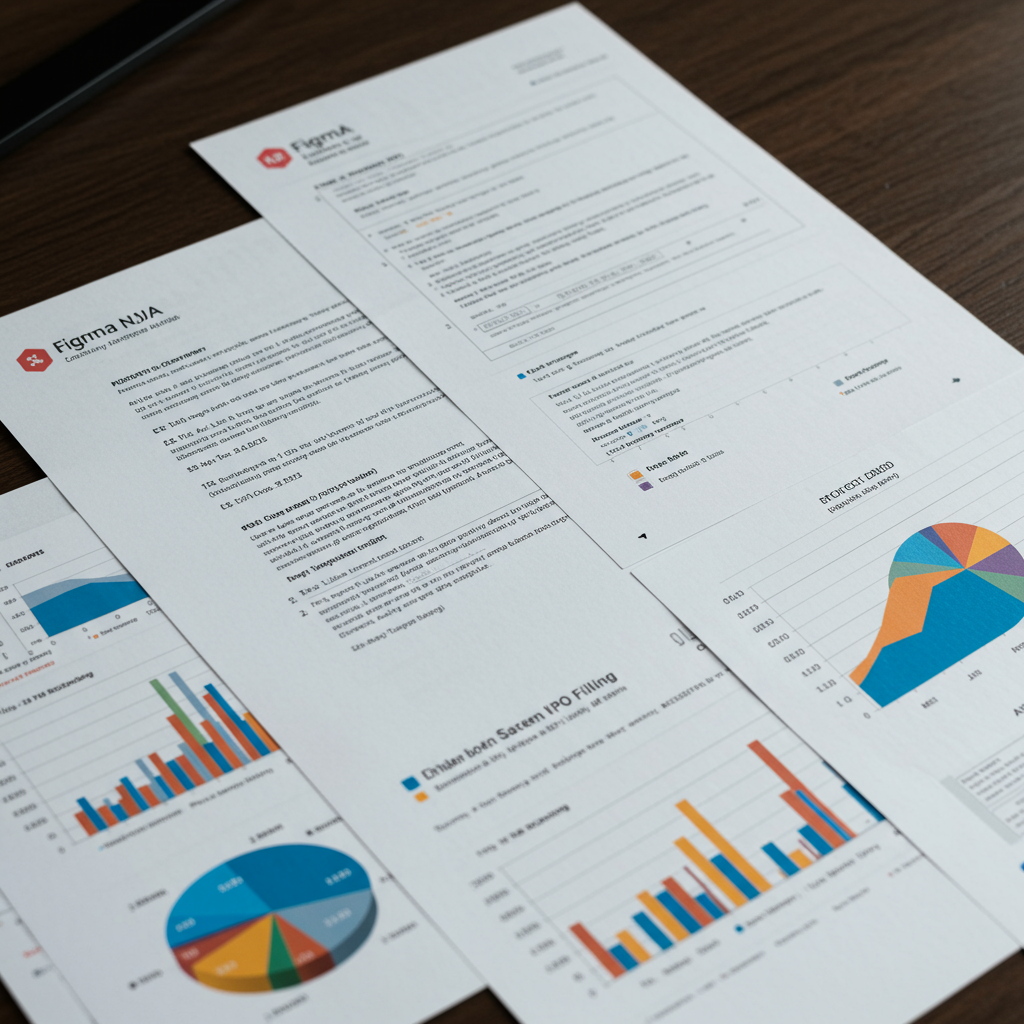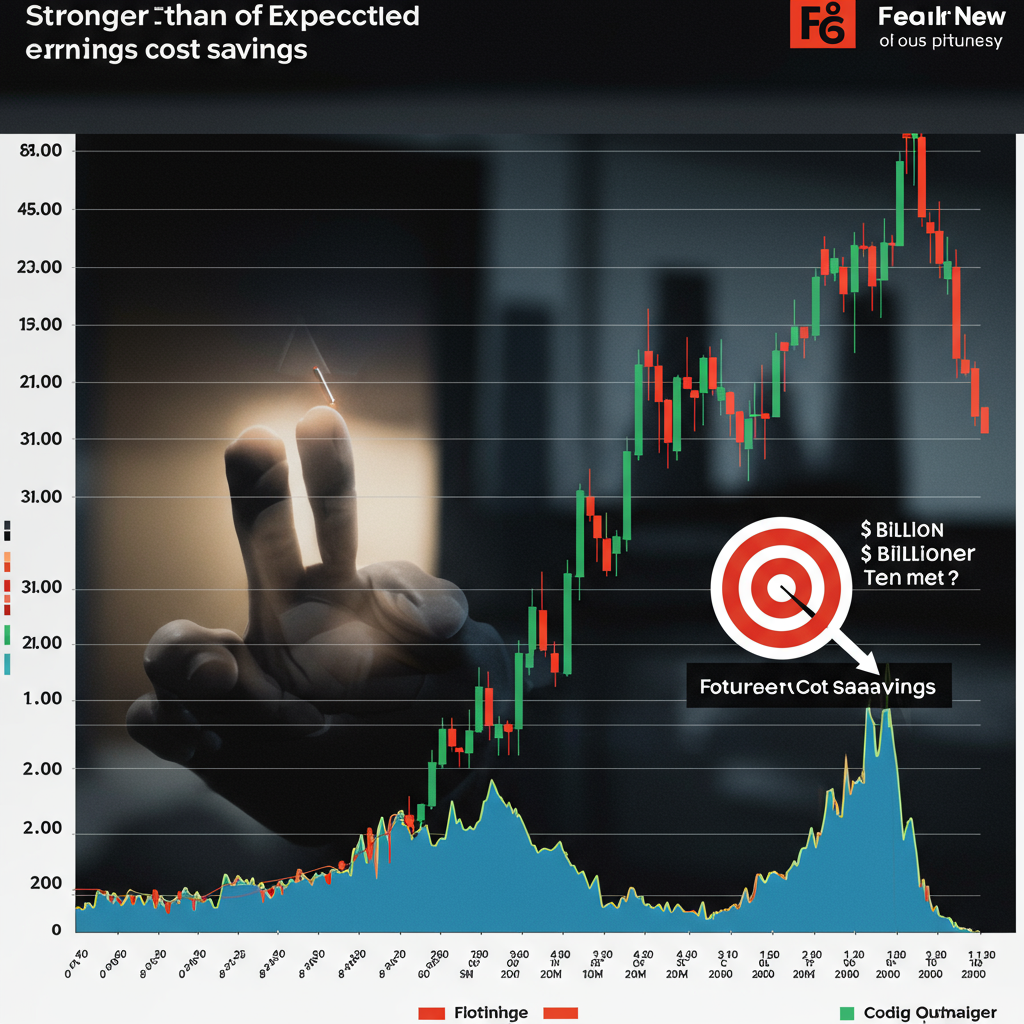Figma, the popular collaborative interface design platform, has taken a significant step towards becoming a publicly traded company. Filing for a U.S. Initial public Offering (IPO) requires immense financial transparency. These filings, known as S-1 documents, pull back the curtain on a company’s inner workings. They detail everything from business models and risk factors to, crucially, financial performance. The S-1 filing made public by Figma reportedly highlights significant growth in both revenue and profitability. This financial strength is a critical element as the company seeks public investment.
Understanding Figma’s Move Towards a Public Offering
An Initial Public Offering (IPO) is when a private company first offers shares of stock to the public. It’s a major milestone. Going public allows a company to raise substantial capital. This funding can fuel further expansion, acquisitions, or research and development. For a tech company like Figma, an IPO provides liquidity for early investors and employees. It also brings increased public scrutiny and regulatory requirements.
Figma has become a dominant force in the design and prototyping software market. Its cloud-based, collaborative approach disrupted traditional desktop-bound tools. Millions of designers and developers rely on Figma daily. This widespread adoption indicates strong market fit and potential for continued growth. The decision to pursue an IPO reflects confidence in its business model. It also signals readiness for the demands of public markets.
Why Financial Performance Matters for an IPO
Potential investors scrutinize a company’s financials during an IPO. They look for indicators of health and future potential. Revenue growth shows increasing customer adoption and sales effectiveness. Profitability demonstrates the company’s ability to manage costs and generate earnings. Consistent, strong financial performance builds investor confidence. It supports a higher valuation for the company’s shares. Figma’s reported growth metrics are key to its IPO narrative.
Key Financials Revealed in the S-1 Filing
The S-1 registration statement is a comprehensive document. Companies file it with the U.S. Securities and Exchange Commission (SEC). It serves as a prospectus for potential investors. The S-1 provides an in-depth look at the company’s business, management, and financial condition. It includes audited financial statements. These statements cover several years of performance.
Financial data is presented in detail. This includes revenue, cost of revenue, operating expenses, and net income (profit or loss). Key metrics specific to the business are often included. For a software company, this might involve metrics like Gross Margin, Customer Acquisition Cost (CAC), or Lifetime Value (LTV). The filing reveals trends over time. This allows investors to assess growth trajectory and efficiency.
Analyzing Revenue and Profit Growth
Reported revenue growth is a primary indicator of business scaling. Investors want to see consistent, significant increases year over year. Profitability, or net income, shows the company’s ability to translate revenue into earnings. For many high-growth tech companies, initial focus is on revenue growth over profit. However, demonstrating a path to profitability, or already being profitable, is a strong positive. Figma’s S-1 filing reportedly showed growth on both fronts. This suggests a maturing business model. It indicates the potential for sustainable financial health.
Understanding the drivers of this growth is crucial. The S-1 likely details factors like expansion into new customer segments, adoption of new features, or geographical reach. It also outlines expenses associated with growth. These include spending on research and development, sales and marketing, and general administration. The balance between growth investment and profitability is key.
The Importance of Financial Transparency
IPO filings mandate a high level of financial disclosure. This transparency protects investors. It provides them with the necessary information to make informed decisions. The S-1 document details potential risks. These can range from market competition and economic downturns to reliance on key personnel or technological shifts. Understanding these risks is as important as understanding the financials.
Investors analyze the financial statements alongside the business description and risk factors. They look for a cohesive story. Does the financial performance align with the company’s stated strategy and market position? The S-1 provides the data points needed for this analysis. For Figma, revealing strong revenue and profit trends in the filing reinforces its market success narrative.
What This Means for Figma’s Future
Going public is not just a financing event. It transforms a company’s structure and operations. Public companies face quarterly reporting requirements. They are subject to greater scrutiny from analysts, investors, and the media. This can lead to increased focus on short-term financial results.
However, an IPO also provides significant advantages. The capital raised offers flexibility for strategic initiatives. Increased visibility can attract talent and customers. Figma’s future growth trajectory will be closely watched by the market. Its ability to maintain revenue growth while managing costs will be key. The foundation laid by the financial performance revealed in the S-1 filing sets the stage.
Figma operates in a competitive landscape. Companies like Adobe offer competing products. The success of its IPO and subsequent performance will depend on continued innovation. It will also depend on its ability to execute its business plan efficiently. The financial health shown in the S-1 provides a strong starting point for life as a public company.
Frequently Asked Questions
What is an S-1 filing and why does Figma file it?
An S-1 filing is a registration statement required by the U.S. Securities and Exchange Commission (SEC) for companies planning an Initial Public Offering (IPO). It provides comprehensive details about the company, its business operations, management, financial performance, and potential risks. Figma files an S-1 to formally announce its intention to go public and to provide potential investors with the necessary information to evaluate the investment opportunity before its shares are offered on a public exchange.
What kind of financial details are crucial for potential investors in a tech IPO like Figma’s?
Investors in a tech IPO like Figma’s focus on several key financial details found in the S-1 filing. Crucial metrics include revenue growth rate, demonstrating the company’s ability to scale its business. Profitability (net income) or a clear path to profitability is also vital, showing efficient operations. They examine gross margins, sales and marketing efficiency, research and development spending, and cash flow. These figures collectively indicate the company’s financial health, sustainability, and potential for future returns.
Where can I find the official Figma S-1 filing document?
Official S-1 filings for companies listing in the U.S. are publicly available through the Securities and Exchange Commission’s (SEC) EDGAR database. This online repository contains electronic filings required by the SEC. You can search the EDGAR database by company name to access Figma’s complete S-1 registration statement and any amendments filed. This is the primary source for detailed, verified information directly from the company regarding its IPO plans and financials.
Conclusion
Figma’s public filing for a U.S. IPO marks a pivotal moment for the company. The required S-1 document provides essential transparency into its operations and financial health. Reports from this filing indicate solid performance, including significant revenue and profit growth. These positive financials are crucial for attracting investors and achieving a successful public listing. While specific numbers are contained within the full filing, the fact of revealing such growth underscores Figma’s market success and positions it strongly for its debut on the public markets. The transition to a public company brings new opportunities and challenges, all built upon the foundation of its demonstrated financial strength.



